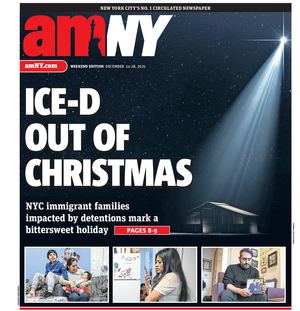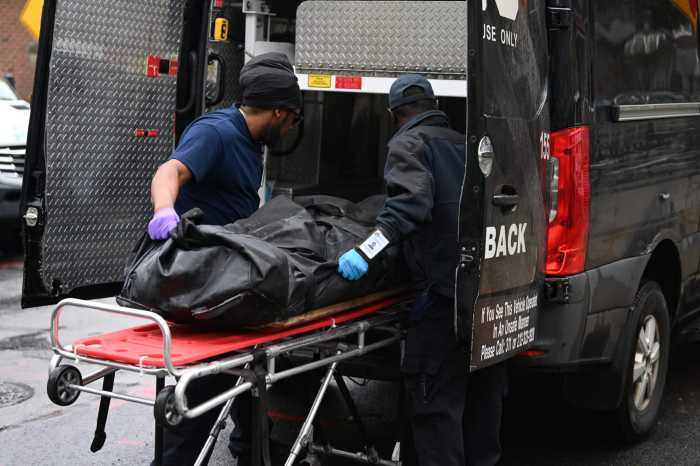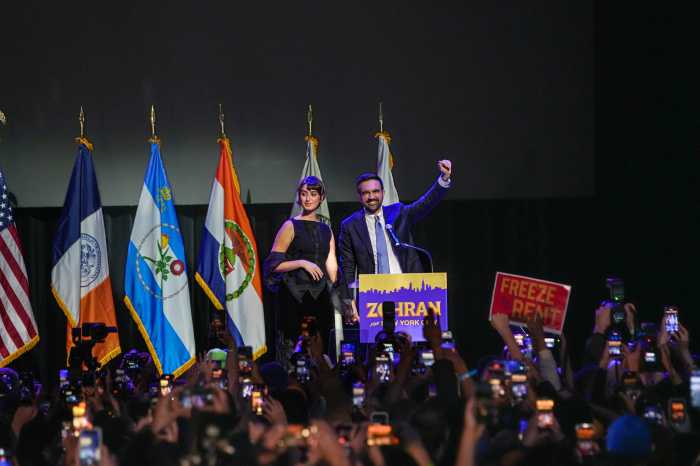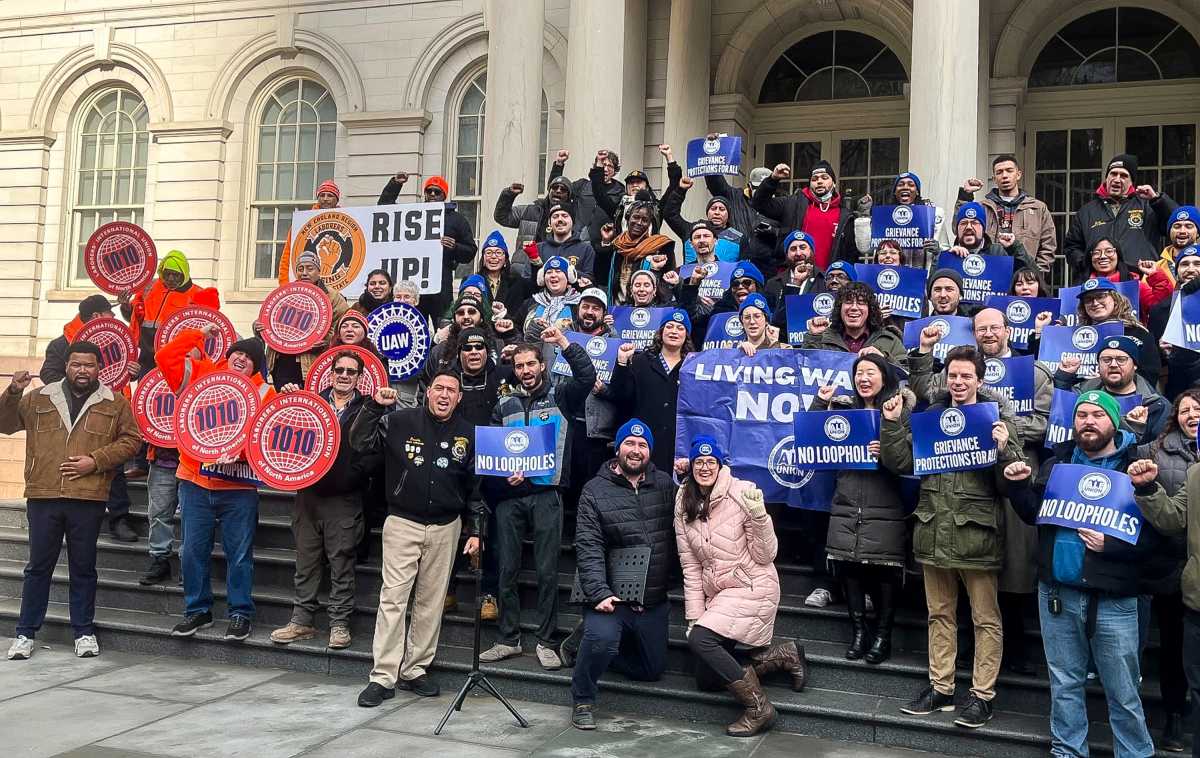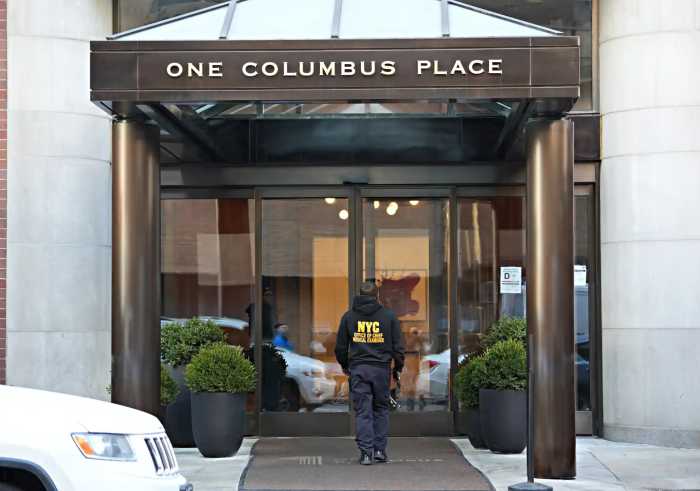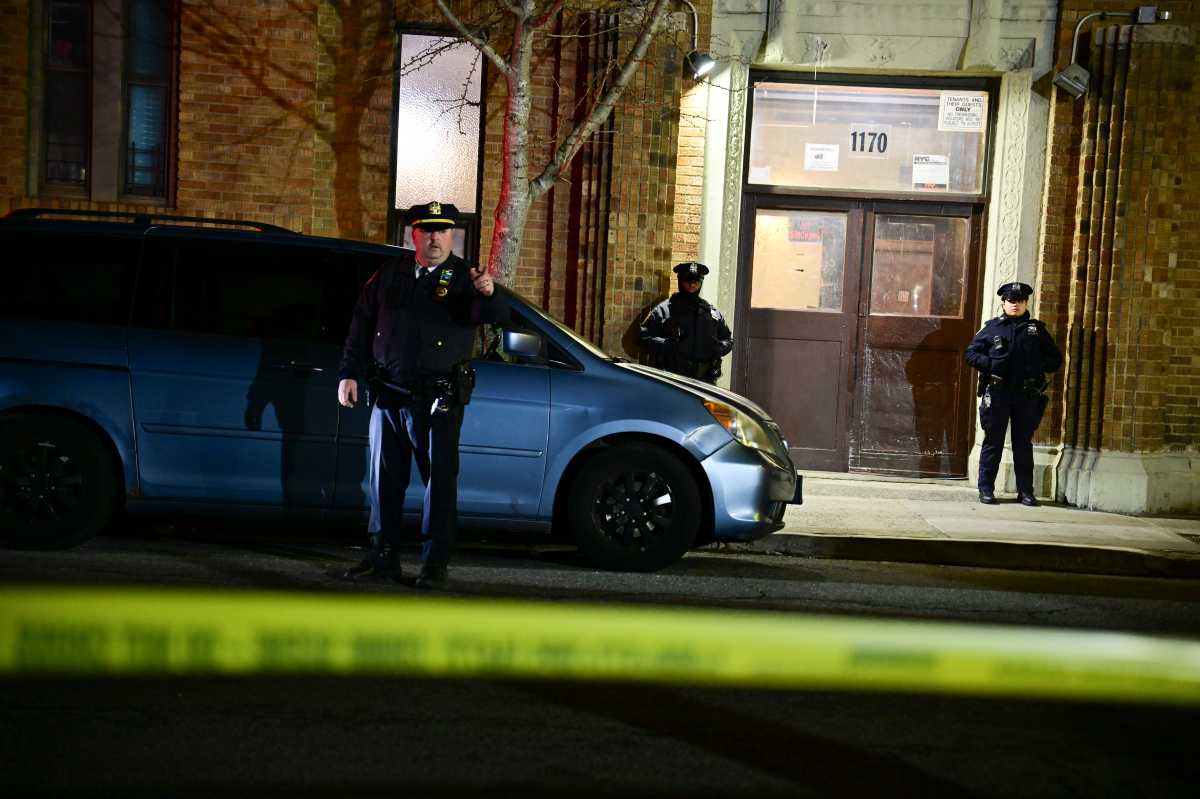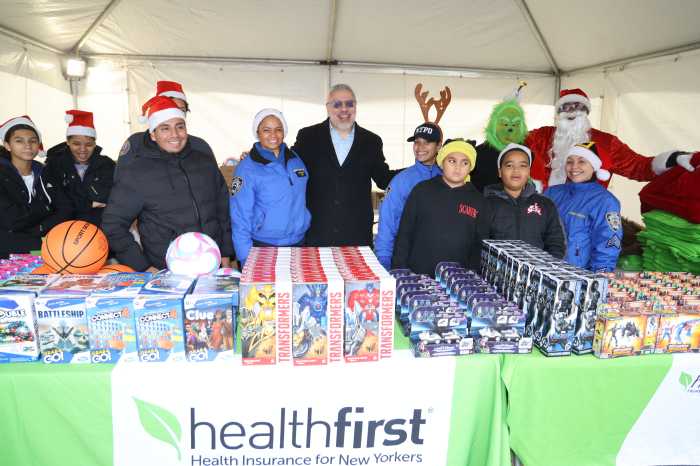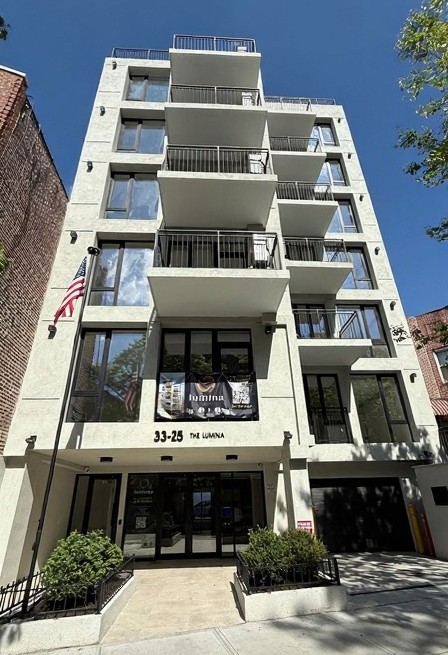
BY CYNTHIA MAGNUS | A week after the Community Board 1 Financial District committee, along with residents, business owners, and other stakeholders asked tough questions and voiced opposition to an uptown methadone clinic’s planned move to 90 Maiden Lane, prompting clinic administrators to drop their bid the following day, members and others question the process that allowed the scheme to go so far without notification.
Catherine McVay Hughes, CB1 co-chair, said, “Instead of communities being forced to run their own fact-finding missions there is no substitute for openness in government, especially for placing such sensitive facilities.”
In response to strong opposition from the community at the meeting, and their own stated doubts about transparency in the application process the committee voted unanimously on Dec. 7 to draft a resolution opposing the relocation of Gramercy Park Services LLC. It serves approximately 350 substance abuse patients at its current location at 253 Third Avenue.
The clinic’s Chicago-based owner Larry Kroll Ph.D. purchased the Gramercy Park practice from its original owner, Guillermo Seco, MD, in January 2010, and hoped to relocate and share space at 90 Maiden Lane with the drug counseling center, Metropolitan Corporation for Life Skills, currently leasing the space. A relocation application dated July 19, 2011 already lists Gramercy Services as associated with the address and phone number for Metro Corp as early as that time (click here).
Following the application withdrawal from the NYS Office of Alcoholism and Substance Abuse Services (OASAS) Kroll, who was not present at the Dec. 7 meeting, said that based on “the vehement” community reaction he would not seek another location within CB1. He also said, “People have a misconception of what the clinics do.”
A Dec. 9 document indicates the Dec. 8 application withdrawal, as well as OASAS earlier concerns about the clinic’s fiscal viability, zoning, building permits, patient capacity, and egress. At the meeting representatives for the Gramercy clinic, and for Metro Corp had “assured” the community that the patients would be using a back door. The document indicates that the proposed entrance is for freight and inappropriate.
An OASAS application review document dated Oct. 25 and revised Dec. 9 also indicates concerns about financial feasibility including Medicaid billing.
Among the community members and representatives of local elected officials who crowded the meeting room were those worried about the possibility of increased drug activity in what they complain still fails to be recognized as a residential area.
Kroll said, “We’re here to serve the community, we’re not bringing in drugs.” He said, We’re going to have to make an assessment of an area that is accepting of a drug treatment center.” He said he would like to be in Manhattan. “We’re at square one now.”
While residents and board members expressed concerns at the meeting about quality of life issues surrounding safety and the potential for attracting crime to the neighborhood, many were equally offended by the lack of candor on the part of the clinic and OASAS.
Ronald Vlasaty, the Chief Operating Officer of the Illinois-based Family Guidance Centers, which includes the Gramercy Park Services spoke to the committee, as did representatives from OASAS, and from the Manhattan District Attorney’s office.
Vlasaty apologized for the clinic’s failure to notify the community, but said the firm’s management thought it was known that there was already a drug treatment center at the location, referring to Metro Corp, which CB1 member pointed out does not dispense methadone, and thus is not comparable to the new proposed clinic. An application document signed by Vlasaty and Kroll on Sept. 11 indicates no community concerns with none expected, and describes the area as commercial with “some residential dwellings.”
No one from the community spoke in favor of the treatment center. Vlasaty made assurances about the clinic’s plans to employ three security guards. Patients coming to the clinic for help would be escorted into and out of the building and would be subject to discharge for loitering in the area.
When asked by the committee when the clinic had expected to move in, Vlasaty said that he was unsure, that it could be within three or four weeks but that it would be up to OASAS.
Raymond Sanchez, former clinic manager at Gramercy Park, who now works as a consultant for Seco who continues as medical director, said that he thought the current clinic administrators had been hoping to move into 90 Maiden by January 15.
Catherine McVay Hughes asked Ramon Rodriguez, Chief Operating Officer of the OASAS office in NYC, “Who is supposed to notify a community of a proposed move?”
Ramon Rodriguez replied, “That is a reasonable question. OASAS is not under obligation to have that informational discussion with a community board.”
This reporter asked Mr. Rodriguez on Thursday what consequences a provider is subject to for failure to reach out to a community before initiating a relocation. Rodriguez answered, “Then I suspect that issues such as were raised and concerns that were voiced last night would arise.”
Jannette Rondo, director of the OASAS communications office ignored multiple requests for information regarding this case.
Joseph Perillo, Distinguished Professor Emeritus at Fordham Law School, and an expert in contracts, said it is “primarily a statutory matter.” Unless OASAS is legally mandated to require – not just recommend – an applicant to notify the local community “the applicant is free not to notify anybody.”
Among the concerns in the room was the possibility of “diversion” meaning the illegal sale of the treatment drugs, and the attraction by drug dealers to the new location.
Belinda Greenfield, OASAS Director of Addiction Medicine and Self-Sufficiency Services said that “methadone is a maligned treatment, especially as it relates to diversion,” that “we are so over-regulated” and that only “high-functioning individuals get take-home doses.”
However, Dr. Seco confirmed that Gramercy currently writes prescriptions for buprenorphine, an alternative to methadone, also confirmed by this document Seco said prescriptions are given for 30-day supplies to responsible persons, and that 80 to 90 percent of patients who receive them comply with the requirement for follow-up visits, but that some fail to return after receiving the prescription.
Law enforcement sources said that buprenorphine has a street value of $10 per pill.
When asked by a board member for an average profile of the clinic’s clientele, Vlasaty replied,”We’re bound by confidentiality laws to [sic] share profiles of the patients we serve.”
Dennis Feld, Deputy Director for the NYS Mental Hygiene Legal Service said that no such state or federal prohibition exists, as long as no personally identifiable information is shared.
Area resident Marcia Wunsch, who had collected 600 signatures with Linda Gerstman opposing the clinic, said, “I did not understand why the application was so readily approved. It makes me question OASAS’ acceptance of the application. I don’t understand how they operate or conduct business. Since 95% of the payees are Medicaid patients, all that taxpayer money goes to a businessman from Chicago.”
While the OASAS application requires the applicant to provide financial information, this topic was not discussed at the CB1 meeting, nor were there any inquiries about whether OASAS requested detailed information about other financial liabilities such as the lawsuit involving unpaid consultant fees.
Gerstman, for whom the main concerns surrounding the clinic’s bid to move Downtown were property value, quality of life, and safety, said of the withdrawal, “We breathed a sigh of relief.” She said of the information provided by Gramercy and OASAS, “My gut tells me that there’s probably gaps in the application process in government in lots of things. This shines a light on it.” Gerstman said, “This is probably something worth looking into by a borough president.”
CB1 member Megan McHugh said, “Speaking for myself, I didn’t go in with a NIMBY perspective, however I didn’t feel their responses were adequate. I was very surprised by OASAS’ lack of transparency. There is clearly a distinction between what is there [Metro Corp] and what was planned.” McHugh said it is a problem that “the Financial District still isn’t considered a residential area.”
Area restauranteur and resident Harry Poulakakos said, “We shouldn’t even discuss this. It will damage the neighborhood.”
Following the discussion committee co-chair Michael Skidmore proposed a resolution citing “a lack of information, the fact that the clinic would be close to nearby schools, and a lack of transparency.” The resolution passed unanimously with eight votes.
Area resident James Fernandez said that Sheffe and McVay Hughes “did a fantastic job in a resolution that reflected the community view.”
Fernandez and Gerstman both said that this was satisfying after what many in the community felt was a misrepresentation of their wishes earlier this fall with the CB1 resolution involving Occupy Wall Street.
Fernandez said, “The issue was procedure. It’s not that the methadone clinic is not needed — it’s the vetting process.” He said, “There’s a definite social need for drug rehabilitation programs. Unfortunately they are very necessary and we as a society need to provide them to people who need it. The mere fact that it wasn’t transparent was very disturbing.”
“The clinic is doing what’s in their best interest, which they have every right to do,” said, Fernandez, “ it’s the vetting process.” He said that McVay Hughes “knew the application better than the applicants, or the agency who produced the application. The Chicago people and OASAS were very unprepared.”
When Sheffe asked if any city agencies are involved Rodriguez replied, “The Department of Health does not have a contract with this provider,” and read from this document. The NYC Department of Health and Human Hygiene (DOH) is considered by OASAS to be the Local Governmental Unit (LGU) relative to the Gramercy clinic.
Luke Bergmann, Director of Recovery, who approved the LGU recommendation for Gramercy Park Services’ certification refused multiple requests for clarification about it, and about general DOH approval procedures. The DOH communications office has also been non-responsive.
The form’s instructions to the authorizing LGU official state, “If you fail to submit this review report to OASAS within the required time frame, OASAS will treat this lack of response as APPROVAL.”
At the CB1 meeting Sheffe had asked Rodriquez, “So they informally review an application but they are not required to respond?”
Rodriguez explained that there is no “economic nexus” between the two agencies. It appears however, that the two agencies may confer on certain certification issues related to the Gramercy move.
Sheffe said, “It’s time for a reassessment of agencies like OASAS.” He said, “They should be required to have a mechanism in place to make community input a requirement,” pointing to the committee’s frequent review of State Liquor Authority applications.
Sheffe said, “SLA has very well defined protocols for approval. The question is why does this same protocol not exist in an agency that is just as critical if not more than SLA.” He said, “I’m advocating a closer look at all these protocols.”
SLA spokesman Michael Smith said, “The community boards are our partners in the process.”
Per a required form an SLA applicant must provide written notice to the local municipality or community board thirty days before filing an application, with proof, and must publish a notice to the community once a week for two consecutive weeks in a County Clerk approved newspaper before a license can be issued. The agency provides a checklist with the application to aid compliance.
Of the agency’s 23-page application Smith said, “SLA is interested in the person, the place, and the financing. So we basically want to know everything about [an applicant].”
McVay Hughes said, “What we saw is that the community notification needs to be improved. One working model seems to be the SLA one.”
Perillo explained,”The liquor authority is acting pursuant to a mandate to notify, OASAS may not have the same statutory mandate. My sense is everyone is home free – possibly the mandate should be changed.”
Speaker Sheldon Silver stated, “It is essential that applicants looking to open a business of this sort make their plans public and engage the community so that there can be a full and open dialogue about the concerns of neighborhood residents. I will work hard to ensure that future applications of this kind are given a full public airing earlier in the process.”
Committee chair Ro Sheffe said it was important now to get the resolution on record. The Community Board 1 full board meeting is scheduled for Dec 21.
